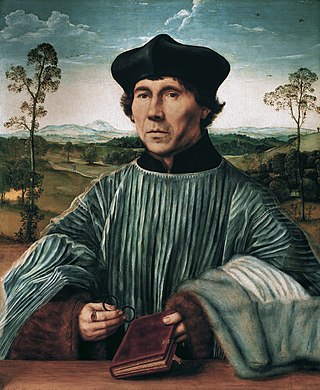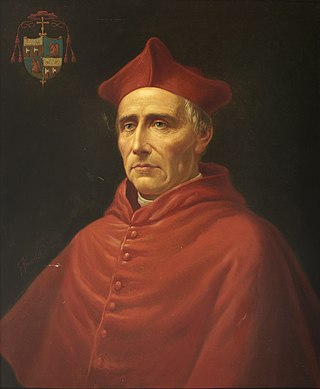Related Research Articles

Thomas Wolsey was an English statesman and Catholic cardinal. When Henry VIII became King of England in 1509, Wolsey became the king's almoner. Wolsey's affairs prospered and by 1514 he had become the controlling figure in virtually all matters of state. He also held important ecclesiastical appointments. These included the Archbishop of York—the second most important role in the English church—and that of papal legate. His appointment as a cardinal by Pope Leo X in 1515 gave him precedence over all other English clergy.

Stephen Gardiner was an English Catholic bishop and politician during the English Reformation period who served as Lord Chancellor during the reign of Queen Mary I and King Philip.
Edward Foxe was an English churchman, Bishop of Hereford. He played a major role in Henry VIII's divorce from Catherine of Aragon, and he assisted in drafting the Ten Articles of 1536.
John Barlow was a member of Henry VIII's Protestant Church as Dean of Worcester Cathedral. During the king's search for an annulment to his first marriage, Barlow acted as a courier between England and Italy, while Rector of Hever.
William Knight was the Secretary of State to Henry VIII of England, and Bishop of Bath and Wells.

Lorenzo Campeggio was an Italian cardinal and politician. He was the last cardinal protector of England.
Andrea Ammonio was an Italian cleric and Neo-Latin poet born in Lucca, held in high esteem by Erasmus, a friend of his. Sent to England by Pope Julius II, he became Latin secretary to Henry VII of England and a prebendary of Salisbury.

Christopher Bainbridge was an English cardinal. Of Westmorland origins, he was a nephew of Bishop Thomas Langton of Winchester, represented the continuation of Langton's influence and teaching and succeeded him in many of his appointments such as provost of The Queen's College in the University of Oxford. Towards the end of the reign of King Henry VII, he was successively Master of the Rolls, a Privy Counsellor, Dean of Windsor and Bishop of Durham. Becoming Archbishop of York and therefore Primate of England in 1508, he was sent as procurator of King Henry VIII to the papal court of Pope Julius II, where he was active in the diplomatic affairs leading to Henry's war against France and took part in the election of Julius's successor, Pope Leo X. He was murdered by poisoning in Italy in 1514 and was succeeded as Archbishop of York by Thomas Wolsey.
Adriano Castellesi, also known as Adriano de Castello or Hadrian de Castello, was an Italian cardinal, an English agent in Rome, and a writer. He was born in Corneto, which is today's Tarquinia. He was the child of a modest family.
Richard Sampson was an English clergyman and composer of sacred music, who was Anglican bishop of Chichester and subsequently of Coventry and Lichfield.
Girolamo Ghinucci was an Italian papal administrator, diplomat and cardinal in the Roman Catholic Church.
Events from the 1520s in England.
Thomas Wynter or Winter was the Archdeacon of York, Richmond, Cornwall, Provost of Beverley, Dean of Wells Cathedral and the illegitimate son of Cardinal Thomas Wolsey.

The Cardinal protector of England was an appointed crown-cardinal of England from 1492 until 1539. A cardinal protector is the representative of a Roman Catholic nation or organisation within the College of Cardinals, appointed by the pope. The role was terminated as a result of the English Reformation.
Thomas Darbyshire (1518–1604) was an English churchman and Jesuit.

Sir Henry Guildford, KG (1489–1532) was an English courtier of the reign of King Henry VIII, master of the horse and comptroller of the royal household.
Edward Lee was Archbishop of York from 1531 until his death.
George Heneage was an English churchman who became Dean of Lincoln.
Richard Woleman or Wolman was an English churchman, Archdeacon of Sudbury from 1522; and the Dean of Wells between 1529 and 1537.
William Benet was an English ambassador.
References
- . Dictionary of National Biography . London: Smith, Elder & Co. 1885–1900.